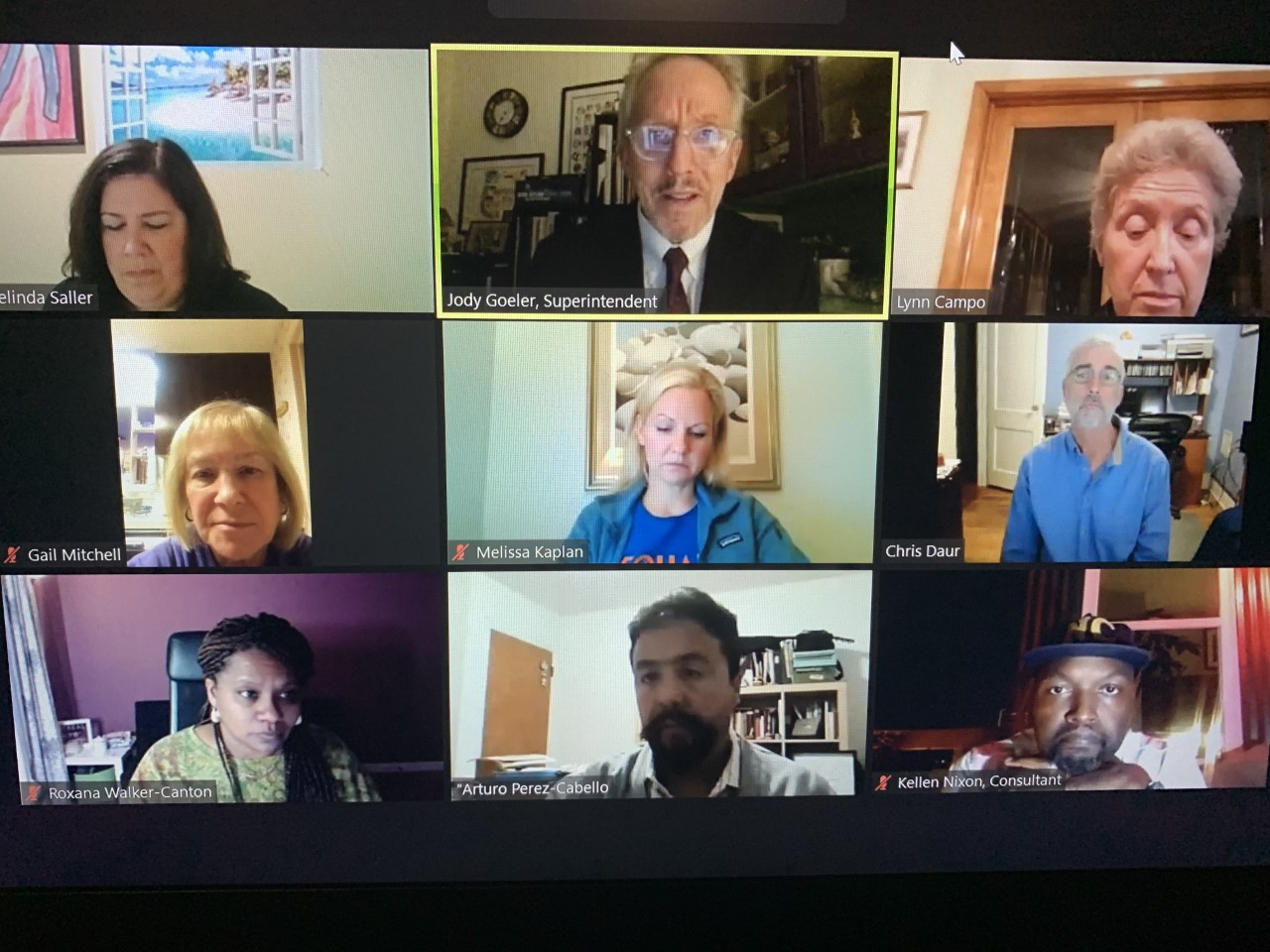Facing steadily rising numbers of COVID-19 cases and crippling shortages in school staffing—including teachers, paraeducators, administrators, custodial staff, and substitutes—the Hamden Board of Education heard from concerned educators and administrators supporting a proposal to shift to full distance learning for the 17.5 school days between the Thanksgiving holiday and January 19. While a vote on the proposal was postponed until next week, BOE Chair Arturo Perez-Cabello—citing COVID statistics—called a return to full remote learning “imminent.”
Nearby districts that have already made similar decisions include Milford and Shelton, COVID red zones that face the double whammy of staffing and substitute shortages.
“It goes without saying that this unprecedented time has changed public education as we know it,” said Hamden Education Association President Diane Marinaro, who submitted public comments read aloud during the BOE meeting November 10. “The Connecticut positivity rate has continued to be troubling to all. Schools across the state, including Hamden, have documented COVID cases and have had to quarantine individuals, groups, or entire school buildings in order to keep others safe and healthy. On many days there are not enough teachers available in a building to cover classes. Students then report to other teachers’ classrooms, and students and teachers are being exposed to others they would not normally be in contact with.”
In fact, the town’s middle school had to close on Friday, followed by a closure of the high school this Tuesday, Marinaro explained, adding that four teachers had to quarantine over the past two days alone.
Superintendent Jody Goeler noted that while he had hoped to maintain Hamden’s hybrid instructional model, he meets regularly with local health officials and has seen a steep upward trajectory of COVID infection rates in Hamden and neighboring communities, which include New Haven. Quarantines of everyone from bus drivers to custodians and classroom teachers have put a significant strain on everything from school transportation and cleaning to in-school instruction, he pointed out. As of the beginning of the November 10 meeting, at least 80 staff throughout the district had been quarantined.
Describing the already high level of coverage teachers are providing for one another and the increasing amount of work being required of them, Goeler warned, “We have an opportunity to be proactive—or we can be reactive. The rubber band is stretching, and stretching, and stretching.”
During the meeting, Assistant Superintendent Chris Melillo learned of a positive COVID case at the high school and noted that staff quarantines had now reached levels closer to 100.
Tipping point
“I am so concerned,” said Gary Highsmith, director of human resources for Hamden Public Schools, who has been tracking local COVID data and dealing firsthand with school staffing shortages. Rather than place students and staff in unsafe situations or face emergency closures, he urged the board, “We have an opportunity to go full remote in a controlled, organized way.”
“I applaud the district’s handling of COVID cases and quarantining those who need to be,” Marinaro said, but added that with flu season fast approaching, COVID spreading, and the reality that people will gather in large groups for the holidays, “we will be on the receiving end of being at further risk of exposure. Isn’t it better to be proactive than to have to react when we are suddenly forced to close down the district as we did in March, giving no time for anyone to prepare?”
While teachers have been doing their best to maintain in-person classes, Marinaro explained, “the reality is, it is getting incredibly difficult to do so. The time has come for Hamden to move forward with a plan that will ensure everyone’s safety while providing students with the best possible education under the circumstances.”
While a number of parents raised concerns about the proposed temporary shift to remote learning, others urged the board to consider the health, safety, and dignity of teachers, and, as one community member described it, their “harrowing balancing act” between in-person and distance learning.
“Moving to distance learning would reflect our value of their work,” one Hamden resident expressed.
“Decisions such as this are not made lightly,” said CEA President Jeff Leake. “They impact students, teachers, and entire communities. Of primary importance here are the well-being of our school communities and the viability of their instructional models. Attempting to maintain in-person instruction in schools that are understaffed, with rising levels of COVID and related quarantines, is unsustainable and simply unsafe.”
Mayor Curt Leng agreed, calling the recommendation to shift to remote learning “a sound one.”
“This is completely new territory we’re entering, and it’s the appropriate move to make to give people time to prepare and plan instead of pulling the rug out from under them,” the mayor added. He asked the board to err on the side of caution for a very large number of students as well as “teaching staff and support staff who have really been on the front lines.”
Five hundred individuals participated in the Hamden BOE virtual meeting, which ran for nearly five hours, wrapping up just before midnight. A vote on the proposal to move to full remote learning was tabled until November 17 to allow the board time to fully review public comments, gather information, consider options for child care, and weigh the best options for
Hamden schools. Perez-Cabello acknowledged that infection rates could force school closures ahead of the board’s November 17 meeting.







